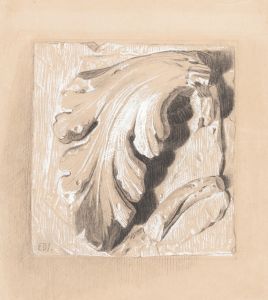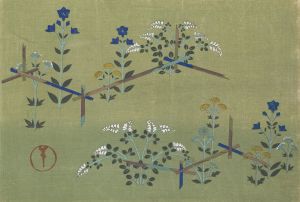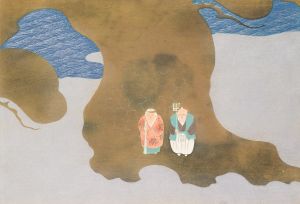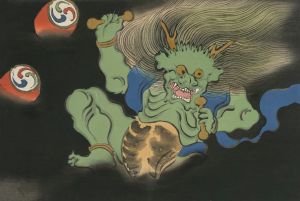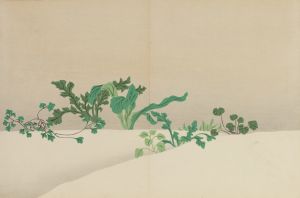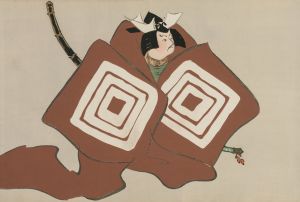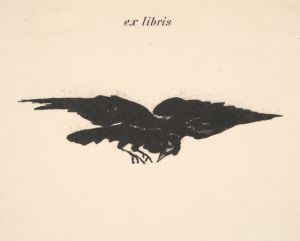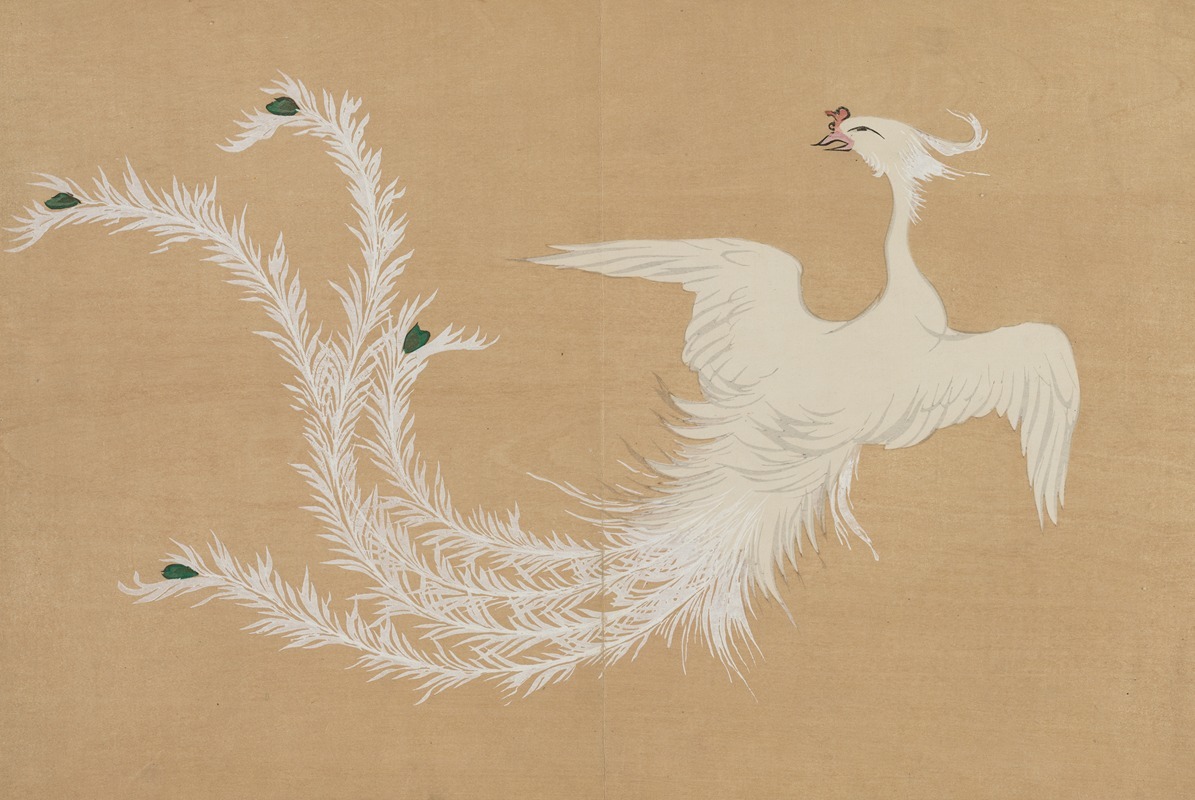
White Phoenix
A hand-painted replica of Kamisaka Sekka’s masterpiece White Phoenix, meticulously crafted by professional artists to capture the true essence of the original. Each piece is created with museum-quality canvas and rare mineral pigments, carefully painted by experienced artists with delicate brushstrokes and rich, layered colors to perfectly recreate the texture of the original artwork. Unlike machine-printed reproductions, this hand-painted version brings the painting to life, infused with the artist’s emotions and skill in every stroke. Whether for personal collection or home decoration, it instantly elevates the artistic atmosphere of any space.
Kamisaka Sekka (1866–1942) was a prominent Japanese artist and designer, known for his significant contributions to the development of the Rinpa school of painting. His work is characterized by a synthesis of traditional Japanese aesthetics with modern influences, and he played a crucial role in the revival of the Rinpa style during the late Meiji and Taisho periods. One of his notable works is "White Phoenix," which exemplifies his unique artistic vision.
"White Phoenix" by Kamisaka Sekka is a stunning example of the artist's ability to blend traditional Japanese motifs with modern design elements. The painting features a phoenix, a mythical bird that holds significant cultural symbolism in Japan. The phoenix is often associated with renewal, immortality, and the sun, and it is a recurring motif in Japanese art and mythology. In Sekka's depiction, the phoenix is rendered in a minimalist style, emphasizing its elegant form and dynamic movement.
Sekka's approach to the "White Phoenix" reflects his training in both traditional Japanese art and Western design principles. He was heavily influenced by the Japonisme movement, which saw Western artists drawing inspiration from Japanese art. Conversely, Sekka incorporated elements of Western art into his own work, creating a cross-cultural dialogue that enriched his artistic output. This fusion is evident in the "White Phoenix," where the use of bold lines and simplified forms suggests an awareness of Western Art Nouveau and Art Deco styles.
The color palette of "White Phoenix" is restrained yet impactful, with the use of white to highlight the purity and ethereal nature of the phoenix. The background is often depicted in soft, muted tones, allowing the figure of the phoenix to stand out prominently. This use of color and contrast is a hallmark of Sekka's style, demonstrating his mastery of visual composition and his ability to convey depth and movement within a seemingly simple design.
Kamisaka Sekka's work, including "White Phoenix," played a pivotal role in the modernization of Japanese art. By integrating traditional themes with contemporary techniques, he helped to redefine the boundaries of Japanese aesthetics. His influence extended beyond painting, as he was also involved in various forms of design, including textiles, ceramics, and lacquerware. Sekka's legacy is evident in the continued appreciation of his work, both in Japan and internationally.
"White Phoenix" remains an important piece within Sekka's oeuvre, showcasing his innovative approach to art and his dedication to preserving and revitalizing Japanese cultural heritage. Through his work, Sekka not only celebrated the beauty of traditional Japanese art but also ensured its relevance in a rapidly changing world. His contributions to the art world continue to be recognized and celebrated, making him a key figure in the history of Japanese art.





